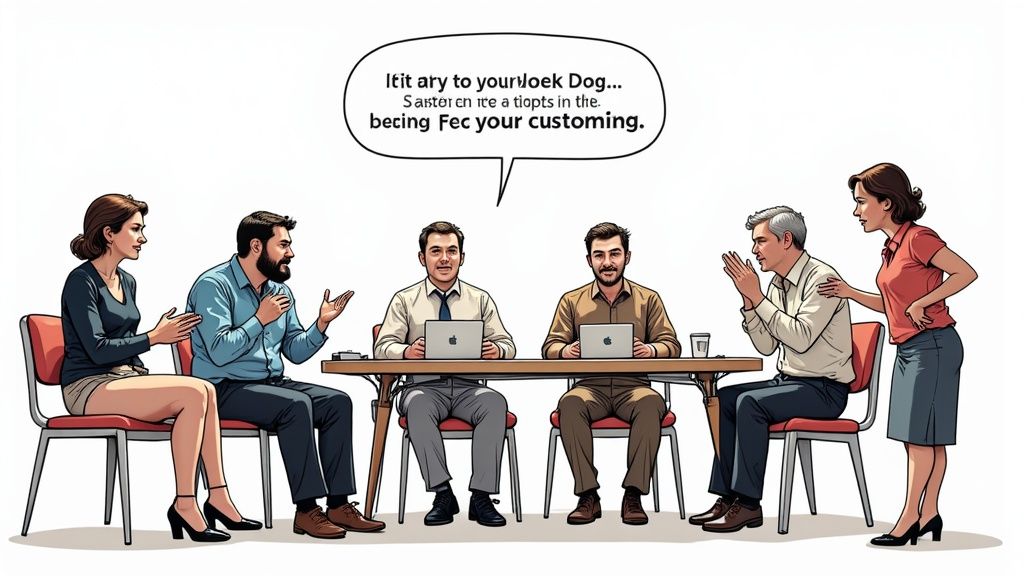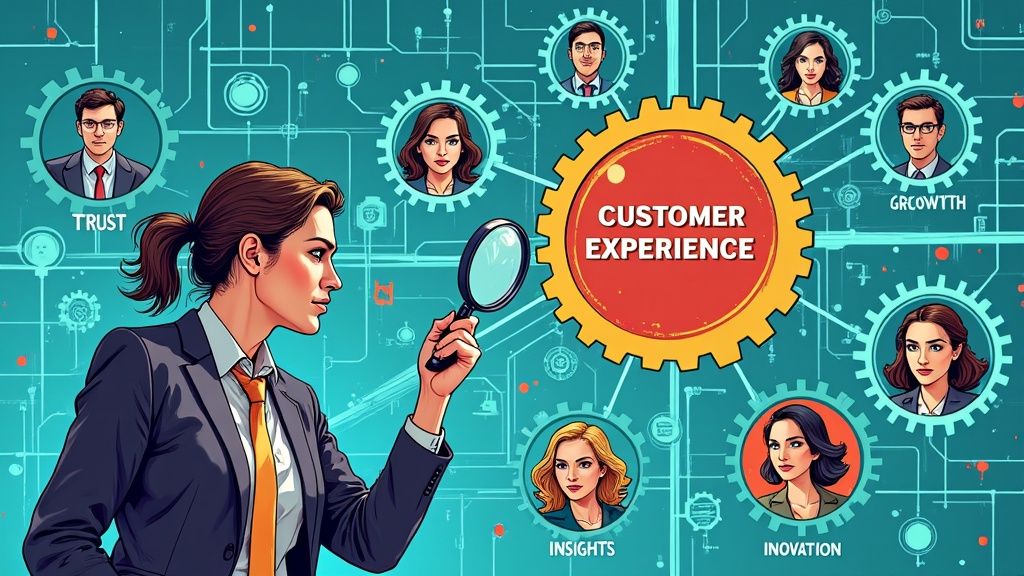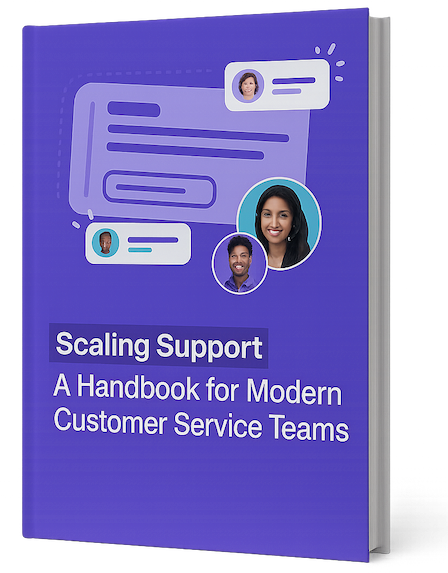The Art and Science of Building Customer Trust

Trust forms the foundation of strong customer relationships, playing an essential role in shaping customer experiences and influencing both buying decisions and long-term loyalty. Today's businesses face a unique challenge – while customers want personalized experiences that require data sharing, they remain cautious about how companies handle their information. Recent studies show this disconnect clearly: 83% of customers say they're willing to share data for better experiences, yet only 24% actually trust businesses with that data. This gap presents a key challenge for companies trying to build authentic connections while delivering the personalization customers want.
Understanding the Generational Divide in Data Sharing
Different age groups have distinct comfort levels when it comes to sharing personal information with businesses. Looking at the data, younger customers between 18-35 years old show much higher trust levels, with 33% comfortable sharing their data compared to just 17% of those over 55. This clear generational gap means companies need thoughtful, targeted approaches. For example, younger audiences may respond well to straightforward value propositions about data sharing, while older customers often need more detailed explanations about security measures and privacy controls. Smart businesses adapt their messaging and give customers clear choices about their data preferences.
Key Trust Signals That Matter
While customers appreciate personalized experiences, they look for deeper signs of trustworthiness before forming lasting relationships with brands. Clear communication about data practices tops the list – customers want to know exactly how their information will be collected, used and protected. Strong security measures and relevant certifications help ease privacy concerns. Just as important are responsive customer support and giving users control over their own data. When companies get these elements right, they create an environment where customers feel secure and in control of their relationship with the brand.
Building Meaningful Connections in a Skeptical Marketplace
Creating trust requires going beyond basic data protection to form real connections with customers. This starts with listening carefully to feedback and showing genuine care for customer concerns. Companies that communicate openly about potential issues and find thoughtful solutions stand out. Take shipping delays as an example – a business that proactively alerts customers and offers alternatives shows true consideration for the customer experience. Through consistent, authentic engagement focused on customer needs, companies can develop the kind of trust that leads to long-term loyalty and helps them stand apart from competitors.
Mastering the Speed-Quality Balance in Customer Service

While building trust with customers matters deeply, the moment-to-moment service experience hinges on finding the sweet spot between speed and quality. Studies show that roughly 80% of American consumers rank quick responses, easy access, knowledgeable help, and friendly service as their top priorities when interacting with businesses. This insight reveals how essential it is for companies to deliver both rapid and effective support.
The Need for Speed in Customer Service
Quick responses are no longer just nice to have – they're expected. When customers reach out with an issue, delays can quickly turn minor frustrations into major problems. On social media channels, 40% of customers want a reply within an hour. This is especially true for younger consumers, with 71% of those aged 16-24 saying fast responses significantly improve their experience. However, speed alone isn't enough – the quality of support matters just as much. This brings us to the human element that makes service truly stand out.
The Importance of Knowledgeable and Empathetic Support
A fast response means little if it doesn't actually solve the customer's problem. Think about reaching out to support with a technical issue, only to receive a generic copy-paste reply that doesn't address your specific situation. That's why well-trained support staff make such a difference – they can quickly understand the real problem, offer relevant solutions, and make customers feel heard. The human touch of acknowledging frustration and showing genuine care helps defuse tense situations and creates positive interactions that customers remember.
Achieving the Speed-Quality Balance: Best Practices
Companies can work toward this balance through several key approaches. Support teams need tools that bring together customer data and communication channels in one place, making it easier to provide quick, informed responses. Regular staff training ensures teams stay up-to-date on products, problem-solving methods, and communication skills that show empathy. The goal is creating consistently positive interactions that make customers want to stick around and tell others about their good experiences. By focusing on both rapid responses and quality solutions, businesses build the foundation for long-term customer relationships and growth.
Converting Customer Experience into Business Growth

While building trust and delivering excellent service matter, the true measure of customer experience lies in how it drives business growth. When positive experiences translate into real results – increased revenue, better retention rates, and stronger loyalty – that's when you know you're getting it right. Research from Harvard Business Review found that customers with good past experiences spend 140% more compared to those with negative ones, showing the clear connection between great experiences and financial success.
The Impact of Customer Satisfaction on Retention and Revenue
Small changes in customer satisfaction can create major business gains. Even a tiny 1% boost in satisfaction scores leads to a 5% jump in customer retention. This shows how consistently good interactions keep customers coming back. Plus, companies that excel at satisfying customers often see their stock prices rise by 12%, as investors recognize the value of putting customers first. These numbers paint a clear picture – great customer experiences drive both profits and market strength.
Identifying Experience Gaps and Preventing Churn
To make the most of customer experience efforts, businesses need to spot and fix problems before they lead to lost customers. This means carefully reviewing feedback across every touchpoint to find where reality falls short of expectations. Long support wait times, confusing websites, or generic communications can all push customers away. Finding and fixing these issues helps prevent customer losses and ensures you get real value from customer experience investments.
Building Effective Loyalty Programs That Drive Growth
Smart loyalty programs can help turn happy customers into business growth, but basic discounts aren't enough. The best programs create real connections with customers through exclusive previews, personalized suggestions, and community involvement. Think of airline programs that offer both free flights and custom travel planning – they give value beyond simple rewards. This personal touch helps satisfied customers become true fans who spread the word and strengthen your market position. When you match customer experience improvements to clear business goals, you unlock the full potential of customer satisfaction and create lasting growth.
Creating a Customer-First Culture That Actually Sticks

Speed, quality, and trust are essential for great customer experience. But these elements need a strong foundation – a genuine customer-first culture. This goes beyond just saying "the customer comes first." It requires weaving customer focus into every part of how your company operates, from daily decisions to long-term strategy. Making this shift takes time and commitment, but it's key to delivering consistently excellent service.
Embedding Customer Focus in Every Decision
The best customer service companies put customer needs at the center of every choice they make. Product teams should ask "How will this feature help our customers?" before considering technical details. Marketing campaigns need to focus on creating real value for customers rather than just pushing sales targets. When every employee understands how their role impacts customers, it creates an environment where excellent service happens naturally.
Developing Service Standards That Resonate
Service standards work best when they connect with both employees and customers on a practical level. Include front-line staff when creating guidelines since they know what works in real customer interactions. Focus on the end goal – making customers happy – rather than rigid rules. Review and update standards regularly based on what customers are saying and what they need. This keeps your service approach fresh and gives staff room to provide great experiences.
Training Programs That Inspire, Not Just Instruct
While solid training is important, teaching procedures alone isn't enough. Training should help employees truly care about customer experience. Use interactive sessions, practice scenarios, and real examples of excellent service. Share positive customer stories and feedback about times when employees went above and beyond. This kind of engaging training helps staff understand customers better and make smart decisions in the moment.
Feedback Systems That Drive Continuous Improvement
Customer feedback powers great service culture. Set up strong systems to gather both positive and negative input through surveys, reviews, social media, and direct conversations. The key is taking action on what customers tell you. Regularly analyze feedback to improve your products, services and internal processes. When customers see you consistently listening and making changes based on their input, it builds lasting trust and loyalty. The best customer experiences come from this ongoing cycle of listening and improving based on real customer needs.
Transforming Customer Data into Actionable Insights
Great customer experiences are built on understanding what your customers need and want. While trust, speed, and quality service matter deeply, the real magic happens when you combine these elements with smart data analysis. By turning raw customer data into practical insights, businesses can move beyond just reacting to problems and start anticipating customer needs before they arise. This proactive approach sets apart truly exceptional customer service.
Connecting the Dots Across the Customer Journey
To deliver outstanding experiences, you need to see the full picture of how customers interact with your business. Data helps map out this journey clearly. For instance, when a customer repeatedly browses products but never buys, connecting their browsing patterns with other touchpoints like abandoned carts or support conversations can reveal what's holding them back. Maybe they find the checkout process confusing, or have questions about the product that aren't being answered. By piecing together these data points, you can spot opportunities to improve their experience and help them complete their purchase.
Identifying Meaningful Patterns and Trends
While individual customer interactions provide valuable snapshots, the real insights come from looking at data across all touchpoints to spot broader patterns. This analysis helps uncover recurring issues that affect many customers. For example, if you notice more negative feedback about shipping delays during certain seasons, you can adjust your logistics ahead of time. Taking action based on these patterns helps prevent problems before they impact large numbers of customers, leading to smoother experiences overall.
Translating Insights into Actionable Improvements
Data only becomes valuable when you use it to make real changes. Consider a company that notices many customers complaining about a confusing returns process. They respond by redesigning the entire returns workflow based on direct customer feedback, making each step clearer and simpler. This kind of concrete improvement, driven by data and customer input, shows real commitment to serving customers better.
Real-World Examples of Data-Driven CX Success
Many companies use data effectively to create better customer experiences. Take Amazon, which analyzes past purchases and browsing history to suggest products customers might like and fix potential issues proactively. Or consider how telecom companies monitor usage patterns to identify customers who might leave, allowing them to reach out with personalized offers. These examples show how smart data use helps companies understand and serve their customers better, building lasting relationships that benefit both sides.
Future-Proofing Your Customer Experience Strategy
Creating exceptional customer experiences requires looking ahead while staying grounded in fundamentals like trust, speed, and quality. As customer needs and technology evolve, companies must take a forward-looking yet human-centered approach to keep delivering outstanding service. Here's how to build a customer experience strategy that stands the test of time.
Embracing AI and Automation Thoughtfully
Artificial intelligence and automation tools are changing how businesses serve customers by handling routine tasks, providing 24/7 support, and enabling personalized interactions at scale. For instance, AI chatbots can efficiently manage common questions, allowing human agents to focus on more complex issues that need a personal touch. The key is implementing these technologies strategically – not to replace human interaction but to enhance it by creating a balanced blend of automated efficiency and genuine human connection.
Personalization That Builds Real Relationships
Customers gravitate toward brands that truly understand their individual preferences and needs. Meeting these expectations means using customer data thoughtfully to tailor each interaction. When a support agent already knows your history with the company or you receive product suggestions that match your interests, it creates a sense of being valued and understood. These personal touches help build lasting customer loyalty.
Keeping the Human Element Strong
While new technologies shape modern customer service, human connection remains at its heart. Customers need empathy and understanding, especially when dealing with complex problems. This means equipping your team with both the technical tools and interpersonal skills to deliver warm, personal service across all channels. Training support staff to listen actively, show genuine empathy, and craft solutions for each customer's situation helps maintain authentic human connections even in digital interactions.
Meeting Changing Customer Needs
Customer preferences and expectations shift continuously based on new technologies and broader trends. Staying ahead requires actively listening to customer feedback, studying industry changes, and testing new approaches to engagement. Think of it as having an ongoing dialogue with your customers – consistently learning from their needs and adapting your approach accordingly. This willingness to evolve based on customer input helps future-proof your service strategy.
Practical Steps for Long-Term Success
Building lasting customer experience excellence requires concrete actions:
- Focus on data insights: Use customer data strategically to understand needs and provide proactive service
- Create seamless experiences: Ensure consistent quality across all customer touchpoints
- Invest in team development: Give your staff the skills to excel in a changing environment
- Build customer-first culture: Make exceptional service central to your company's values
By combining these practical steps with genuine care for customers, you can create experiences that not only work today but adapt smoothly as needs change.
Looking to simplify your customer service tools while staying on top of feedback? SupportMan makes it easy by bringing Intercom ratings directly into Slack. Get real-time insights, empower your team, and improve customer satisfaction. Try it free today at https://supportman.io


